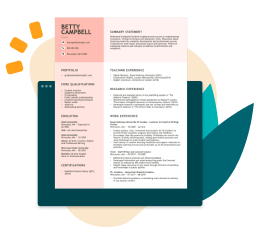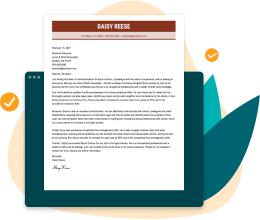How to Use the STAR Interview Method to Win a Job
The STAR method for interviews helps you tell a story with a clear and convincing point. Here, you’ll learn how to use the STAR format to ace your interview. Plus, see 12+ STAR answer examples.
What is the STAR method for interviews?
The STAR Method is an acronym that structures stories about your past work experience. It’s most commonly used during an interview to make your story point clear.
Each letter stands for a different step:
- Situation – Outlining the context and background for your story.
- Task – Explaining the goal or objective you needed to reach.
- Action – Discussing the steps you took to reach your goal.
- Results – Mentioning the achieved outcome, using numbers if possible.
Is the STAR method the best technique for job hunts? Benefits explained.
The STAR method is primarily a strategy for answering interview questions. However, it could also impress employers in a cover letter or resume much the same.
It’s an effective way to explain your work history because it organizes everything logically and is easy to visualize.
Although there are other methods, like CAR (Context – Action – Result) and PAR (Problem – Action – Result) most experts and government offices recommend STAR.
How to use the STAR method to answer interview questions
Putting STAR into practice is as simple as following the acronym:
To answer an interview question using the STAR method, remember:
- Situation: Mention where you were working and your job title.
- Task: Outline the goal or function you had to reach.
- Action: Detail the method(s) and skills you used to problem solve.
- Results: Explain the outcome and benefits of your actions.
Just plug a good story from your career into this structure, using it like a template.
Here’s an example of how to use STAR to answer an interview question:
“Can you tell me how you overcame a difficult work challenge in your career?”
We’ve highlighted each part of a solid answer in a different color to make the STAR steps clear: situation, task, action and results:
In my first role as a fourth-grade teacher, I encountered a challenging situation where several students were consistently struggling with grasping fundamental math concepts and at risk of failing state assessment tests.
We needed to find a way to help these students overcome their difficulties, improve their understanding of the subject and help them achieve passing scores on the state exam.
I implemented a multimedia instruction approach, creating tailored lesson plans and utilizing various teaching methods such as visual aids, hands-on activities and peer tutoring sessions to cater to different learning styles within the classroom. We also provided after-school learning sessions as an option for these students.
Our efforts were fruitful! Not only did the struggling students show significant improvement in their math skills, and 92% of students received passing scores, but the overall classroom dynamics also became more inclusive and supportive.
12 Great STAR method examples: answers to common interview questions
1. Can you give an example of a time you went above and beyond?
Once, during a busy holiday season, our store was slammed with high customer traffic. Recognizing the daily strain on our team, I voluntarily extended my shifts and took on additional responsibilities to ensure customers received attentive service. This included restocking shelves, assisting with checkout and staying late to help with closing procedures. My efforts were noticed by upper-level management because our store had the best sales performance of any franchise location in December.
2. What’s the work achievement that you’re most proud of?
One of my brightest work achievements was exceeding my quarterly sales target by 30% for two years straight. I achieved this by implementing a proactive outreach strategy, identifying new leads through networking events and nurturing relationships with existing clients. Through diligent follow-ups and personalized customer care, I met and surpassed the sales goal, earning a promotion to senior sales associate in 2023.
3. What’s one of the most stressful work situations you’ve handled before?
I faced a particularly stressful work situation when our project deadline was moved up unexpectedly due to client demands. Despite the tight timeline, I remained calm and focused, prioritizing tasks and rallying the team to meet the new deadline. By delegating effectively, maintaining open communication and staying organized under pressure, we successfully delivered the project on time, earning praise from the client and upper management.
4. Can you describe a time when you’ve dealt with conflict at work?
There was a time when collaborating with a colleague with a different project management approach. We clashed over decision-making processes, especially on deadlines, leading to tension. To address the conflict, I initiated a one-on-one meeting with my colleague to discuss our concerns and find common ground. By actively listening, negotiating and focusing on our shared goal, we resolved our differences constructively and worked more efficiently moving forward.
5. Can you describe a situation where you feel you performed well under intense pressure?
Yes, at my previous employer, we had a product launch for a new software where the stakes were high and deadlines tight. Our team had to develop a product from start to finish within a six-month timeframe. Despite the stress, I remained composed, organized and focused on executing my tasks efficiently. By maintaining open communication, actively preventing burnout and supporting my colleagues, we successfully launched the product on time, exceeding expectations.
6. Can you describe a time when you demonstrated leadership skills?
In my previous role as a project manager, our team struggled to meet a crucial deadline due to conflicting priorities and a lack of direction. Recognizing the situation’s urgency, I used my leadership skills to ensure the project stayed on track and met the deadline. I immediately called for a team meeting to clarify objectives, assign tasks based on team members’ strengths and establish a clear timeline. I provided regular updates, offered support and guidance to team members when needed and maintained open communication channels to address any issues promptly. In the end, we met the deadline and exceeded expectations in delivering the project.
7. Can you give an example of a mistake you made at work and how you responded?
In a previous marketing role, I mistakenly sent out incorrect pricing information to clients, which resulted in confusion and dissatisfaction. To rectify the situation, I promptly acknowledged the error, issued a correction notice to affected clients, and offered a one-time discount on future purchases as a goodwill gesture. I also implemented double-check procedures to prevent similar mistakes in the future. We maintained 100% client retention.
8. Have you ever met a work goal you couldn’t achieve?
Despite my best efforts, I once encountered difficulty achieving a sales target due to an unforeseen market slowdown. Despite adjusting my strategies and putting in extra effort, I fell short of the goal. However, I viewed this setback as an opportunity to learn, adapt and improve. I sought feedback from mentors, analyzed market trends and refined my approach for future goals, ultimately turning the experience into a valuable learning opportunity.
9. Have you ever had to deal with an unpleasant co-worker? What didn’t you like, and how did you get along with them?
I used to have a co-worker who was negative in spirit and created tension within the team. Despite their challenging demeanor, I remained professional and focused on maintaining a positive work environment. I addressed the issue diplomatically by addressing specific behaviors that impacted team morale and productivity. It wasn’t easy. But, after some open communication and finding common ground, we were able to find mutual respect and harmony.
10. Have you ever had to deal with an unhappy customer, and how did you handle the situation?
I had to deal with an unhappy customer who received a damaged product. Understanding the importance of customer satisfaction, I actively listened to their concerns, apologized for the inconvenience and offered a prompt resolution by providing a replacement product and expedited shipping at no extra cost. By showing empathy, taking swift action and following up to ensure satisfaction, we turned the situation around and retained the customer’s loyalty.
11. Have you ever disagreed or had a conflict with a manager, and if so, how did you resolve it?
I disagreed with my former manager regarding project priorities. Despite my warnings about the workflow strategy creating hiccups in project execution, he wanted to push ahead. To address the conflict, I scheduled a private meeting with the manager to discuss our differing perspectives openly and constructively. By actively listening, providing a rationale for my viewpoint and proposing alternative solutions, we were able to reach a compromise that aligned with both our goals and helped the project to succeed.
12. Have you ever received constructive feedback, and how did you respond to it?
During a performance review, my supervisor provided feedback on my communication style, noting instances where my clarity and conciseness could improve. Though it was hard to hear, recognizing the importance of effective communication, I understood the need to address this feedback. I took proactive steps to enhance my communication skills by seeking guidance from my supervisor and colleagues on best practices. Over time, by embracing constructive feedback, there was a significant improvement in my communication effectiveness, with colleagues providing positive feedback on my clarity and ability to convey complex information succinctly.
How to prepare your STAR responses for an interview
Now that you understand how to structure a STAR method response and have seen some clever examples, you should prepare for your interview. Preparing and practicing the stories and anecdotes you want to share will help you feel confident and come across as highly prepared and competent! Follow these tips to ensure you can show up and nail your STAR method story!
Reread and study the job description.
Review popular interview questions.
Practice your STAR story.
Key takeaways
To recap, here are some of the main points about using the STAR interview method:
- The STAR method is an acronym tool to help you cover the main points of a story.
- The STAR method is mainly used for interviews but may also apply to resumes or cover letters.
- Remember that each letter stands for S=situation, T=task, A=action and R=result.
- Plan the stories you want to tell about your career by putting them into this format.
- Review the job post or ad to target what the employer might want to hear most about your career.
- Practice and perform your STAR story before the interview; it will help you feel more natural and prepared.
Also, it’d be best if you kept in mind that your job hunt isn’t over yet. It may be helpful for you to keep applying for more jobs even though you’ve landed your interview.
Check out our best tool to help you, the Resume Check. You can upload your resume and it will give you a score and suggestions for improvement.
It makes taking your resume to the next level even easier!
Featured in:*

*The names and logos of the companies referred to in this page are all trademarks of their respective holders. Unless specifically stated otherwise, such references are not intended to imply any affiliation or association with LiveCareer.




